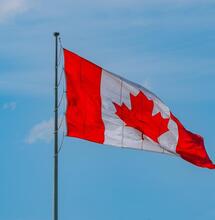Vermont Collects Over $15 Million in Cannabis Tax Money

The Vermont Cannabis Control Board released a final report for 2024, sharing data for the state’s adult-use cannabis program. The report takes note of a slight increase in active cannabis licenses throughout the year, increased indoor versus decreased outdoor growing, as well as a falling number of patients and caregivers registered with the state medical program. Concluding with October of 2024, state authorities collected more than $15 million in adult-use cannabis tax money.
Last year seems to have been a good year for doing cannabis business in the Green Mountain State. Authorities reportedly collected approximately $15.21 million in state marijuana tax revenue. Marijuana tax money is collected through a 14% excise tax on recreational product sales, settled by consumers and remitted by retailers. In addition, cannabis sales in Vermont are subject to state 6% sale tax. Typically, cannabis tax money is allotted to different kinds of programs, including for schools and addiction centers.
Vermont Enters 2025 with More Than 580 Active Licenses
Vermonters legalized adult-use cannabis in July, 2018, which initially permitted private use and possession for those aged 21 and above. Regulated sales entered into law two years later, in 2020, although licensed retailers only started with work between May and October of 2022. A lot has changed in two years.
While initially only a dozen dispensaries sold weed in Vermont, that number is now close to hundred. According to the report from the Vermont Cannabis Control Board, there are currently a total of 583 active licenses in the state, of which the most, or 387, are for cultivation. Ninety four are for retail, while 88 are for manufacturing.
Nearly a fifth of all licensees hold an Economic Empowerment priority status, while another fifth are Social Equity applicants; the rest is standard licensing.
The report further remarks that indoor cultivation is on the up in Vermont as outdoor cultivation went down in 2024. “In November of 2023, there were 370,000 sq. ft. of indoor licensed canopy capacity square footage and 564,000 sq. ft. of outdoor growing space,” the report notes. “In Nov. of 2024, indoor growing square footage increased to 339,500 sq. ft., and outdoor growing square footage decreased to 526,000 sq. ft.”
Moreover, as Vermont’s adult-use market grew in 2024, the state medical cannabis program shrunk. Between Nov. 2023 and Nov. 2024, the number of enrolled patients fell from 3,001 to 2,707, while the number of caregivers decreased from 138 to 121, according to the state registry.
Also read on Soft Secrets:

_11zon.jpg)











